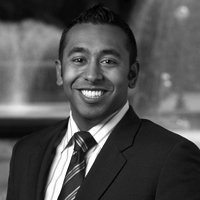Supreme Court Justice Ruth Bader Ginsburg remained hospitalized Wednesday after undergoing a cardiac procedure early Wednesday morning. The 81-year-old is the oldest active justice on the nation’s highest court, surviving past diagnoses of colon and pancreatic cancer. Setting aside her undeniable influence on the nation’s legal system, Wednesday’s events present an important opportunity to discuss this procedure specifically, and the impact of high-tech medical procedures on an aging population.
Cardiac Stenting: Mending an Aching Heart
As the heart pumps blood to the far reaches of the body, it requires its own blood flow to receive vital oxygen and nutrients. It receives these through the coronary arteries. With age, smoking, high cholesterol, and other risk factors, plaque can build up along the lining of these arteries, leading to narrowing and decreasing blood flow to some heart muscle. We can all relate to the burning sensation in leg muscles when we run hard and start to exceed their ability to receive adequate oxygen. Similarly, if the heart muscle is working hard and receives inadequate blood flow, it can produce burning or discomfort in the chest, also known as angina. Worse yet, cardiovascular disease continues to a leading cause of mortality in the U.S., with one person dying of heart disease on average every 40 seconds.
In Justice Ginsburg’s case, the anginal pain she reportedly experienced while exercising on the night of November 25th was related to narrowing in a main artery on the right side of the heart. The doctors at MedStar Washington Hospital Center discovered this by taking x-rays after injecting a special dye that outlines blood flow in the coronary arteries. While the exact treatment records are not available, they likely first opened up the narrowed area by inflating a small balloon located in the vessel, and then placed an expandable metal cage known as a stent to help keep the vessel open. Justice Ginsburg underwent this procedure successfully and is progressing with her recovery.
No Such Thing as a Free Lunch
However, no medical intervention is without risk. And for surgical interventions in particular, that risk is often front-loaded: the chance of experiencing an adverse event is highest early on, and gradually falls in the weeks and months that follow. An example in the case of cardiac stents is stent thrombosis, when a clot forms in the stent and partially or completely blocks blood flow. This can lead to the very heart attack that placing the stent was trying to prevent. A recent review of a large international sample of patients led by Dr. Ron Waksman, associate director of the Division of Cardiology at MedStar Washington Hospital Center, where Justice Ginsburg received her stent, found that 75 percent of these thrombosis events occurred within one year.
The benefit from a procedure largely depends on why it was performed. Emergent procedures provide their benefit right away and have the awesome potential to rescue a patient from the brink of death. But another class of procedures—many refer to them as “statistical procedures”—reduce the risk of some bad event at some point down the road, in a patient experiencing no pain or symptoms today. Examples range from the non-invasive (screening mammograms) to the minimally invasive (screening colonoscopy, cardiac catheterization), to the maximally invasive (preventative mastectomies, surgery for brain aneurysms). An interesting feature of these statistical procedures is that they provide essentially no benefit at the time they are done; there were no symptoms to relieve. Patients and doctors instead hope that they help with each passing day, by preventing cancer, heart attacks, or other diseases, and ultimately by extending a person’s longevity.
Age and Medical Risk
How does age factor into the risk-benefit comparison? First, let’s assume (unrealistically) that the risk of a procedure does not change with a patient’s age. In this scenario, younger patients have a longer amount of time to obtain the benefits of any procedure, particularly if it extends longevity. Overall, this makes it more likely that the sum total of these benefits will exceed the procedure’s up-front risk than it would if our patient were older.
Now let’s add in the real-world fact that risks of procedures certainly do change with age. The risk-benefit math becomes less favorable for the older patient. Some of this risk comes from the nature of the procedure itself, but a large component is related to the stress of anesthesia, rapid changes in fluid and blood volume, and post-operative recovery.
Saving for a Rainy Day
A big reason that younger patients are generally more equipped to handle added stress on the body is the idea of physiologic reserve. Think of your body as a power plant. You go through your day making the energy you need for typical activities, and this usually stays fairly constant. But if something unusual happens, such as getting ill, and you need an extra boost of energy, there’s a reserve available. We can make that reserve bigger by living a more active lifestyle and exercising, pushing our bodies to do more. That reserve gets smaller with sedentary lifestyles, and with age. A smaller reserve means that the body’s power plant is already running very close to capacity. Add in additional demand, as with a surgical procedure, and the body is pushed to its very limits.
As we continue to push the boundaries of medical technology, physicians have an obligation to patients to guide them through understanding the risks and benefits of the procedure, and how their particular circumstances add or subtract risk. Age is one of many factors, but it will play a larger role in the conversation as Baby Boomers retire and longevity is extended.






